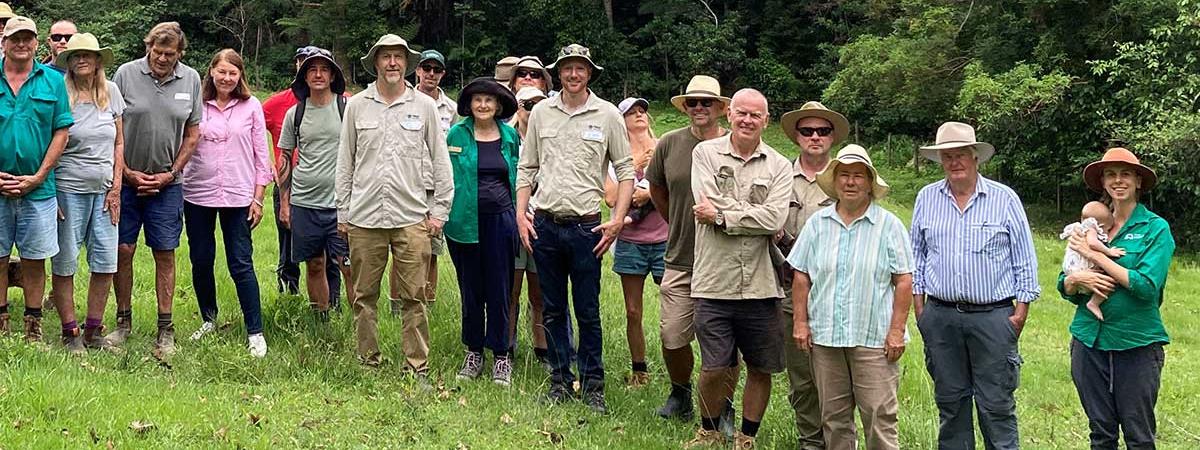Agriculture and farming
Council's Sustainable Agriculture Program collaborates with local farmers to encourage farmland sustainability and productivity while enhancing environmental values.
The program provides grant funding, educational field days and resources, policy work and advocacy.
Join our farming community

Find out about workshops, field days, events, grant opportunities and other initiatives.
Sign up to our Sustainable Agriculture Network.
Book a free onsite farm consultation
Contact our Sustainable Agriculture Program Leader on 02 6670 2400 or at agriculture@tweed.nsw.gov.au.
Workshops and events
Roots So Deep, Wednesday 30 April 2025 5:30 – 9 pm
Tweed Landcare and Tweed Shire Council are excited to present a sneak peek community screening of the new docu-series Roots So Deep (you can see the devil down there), brought to you by Soilcare. The event will showcase 2 episodes of the new 4-part series which takes a deep look at how livestock and soil can help be a solution for climate change, bringing together stories of regenerative grazing farmers and their neighbours who are using generational practices of farming, along with scientists to measure and compare what’s happening on the farms.
Find out more(PDF, 8MB) or book your spot.
Sign up to our Sustainable Agriculture Network to find out more about upcoming workshops and events.
Sign up now
Farm Walk and Talk, Thursday 1 May 2025 9:30 - 11:30 am
Join Tweed Shire Council's Sustainable Agriculture Program as we walk and talk our way around Sherelle's farm at Back Creek, near Tyalgum in the Tweed Shire.
Sherelle has been on the property for 5 years, running approximately 25 head of livestock while doing what she can to maintain and enhance the farms natural values. Come along to:
- hear Sherelle’s story
- learn about the history of the farm and the area from Gary, the previous property owner and 5th generation farmer
- see how fencing has been used to protect high conservation value native vegetation, creek banks and dams from livestock
- network with fellow farmers, and
- develop ideas for managing livestock and natural assets on your own farm.
All local farmers are welcome.
Book your spot
Tweed Sustainable Agriculture Strategy
The strategy, developed in consultation with industry and local farmers in 2016, outlines Council’s commitment to supporting the sustainable growth of agriculture in the Tweed and includes a number of achievable and aspirational goals.
Tweed Sustainable Agriculture Strategy(PDF, 2MB)